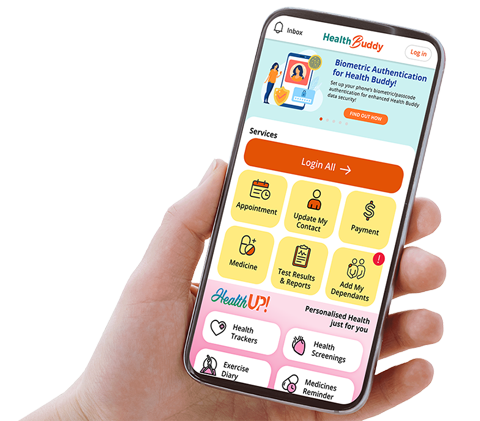What is - Pancreatic Cancer
What is pancreatic cancer?
The pancreas is an organ located in the abdomen which helps digest food and regulate blood sugar. It is surrounded by other organs including the small intestine, liver and spleen. The pancreas is divided into four parts – the head, neck, body and tail.

Pancreatic cancers begin in the tissues of the pancreas, and are categorised according to
- where they occur in the pancreas
- the type of cell that the cancer started
The pancreas is made up of two types of glands.
One type of gland tissue produces digestive enzymes that assist in the digestion of food. These glands drain into ducts, which in turn drain into the small intestine. It is the cells of these ducts which can turn into cancer. This is the most common form of pancreatic cancer known as pancreatic exocrine cancers, which accounts for 95% of all pancreatic cancers. About 95% of these are adenocarcinomas.
Another type of gland tissue produces several important hormones such as insulin. Cancers of the glands in the pancreas are known as neuroendocrine pancreatic cancers and are uncommon, accounting for about 1% of all pancreatic cancers.
What are the different types of pancreatic cancer?
There are two main types of pancreatic cancer:
- Exocrine pancreatic cancer: This is the most common type, accounting for about 95% of cases. It starts in the exocrine cells responsible for producing enzymes that aid digestion. The most common form of this cancer is adenocarcinoma.
- Endocrine pancreatic cancer: Also known as pancreatic neuroendocrine tumours (PNETs), this type is rarer and begins in the endocrine cells, which produce hormones like insulin. Examples include insulinomas and gastrinomas.
How common is pancreatic cancer?
In Singapore, pancreatic cancer is the 10th most common cancer in males. It is generally aggressive and ranks as the 4th most common cause of cancer death in males and females.
Symptoms of Pancreatic Cancer
What are the symptoms of pancreatic cancer?
There are often no or mild symptoms in the early stages of pancreatic cancer. When the cancer progresses, some symptoms may show.
Symptoms of pancreatic cancer may include:
- Fatigue and weakness
- Jaundice (yellow colouration of the skin and whites of the eyes)
- Loss of appetite
- Nausea or vomiting
- Unexplained and unintentional weight loss
- Pain or discomfort in the upper part of the abdomen
- Diarrhoea
- Indigestion or bloating
When should you see a doctor?
Make an appointment with your doctor if you have any signs or symptoms that worry you.
Pancreatic Cancer - How to prevent
How is pancreatic cancer prevented?
There are several ways to lower the risk of pancreatic cancer:
- Avoid smoking or inhaling second-hand smoke
- Limit alcohol consumption
- Reduce fat intake
- Adopt a diet with high intake of fruits, vegetables and whole grains
- Exercise regularly and maintain a healthy weight
Pancreatic Cancer - Causes and Risk Factors
What are the risk factors for pancreatic cancer?
While the exact cause of pancreatic cancer is unknown, several factors have been found to play a role in its development. These risk factors include:
- Age – it is more common in people over the age of 70
- Smoking
- Obesity
- Pancreatitis – chronic inflammation of the pancreas
- Family history of pancreatic cancer
- Hereditary syndromes such as BRCA2 gene mutation, Lynch syndrome and familial atypical mole-malignant melanoma (FAMMM) syndrome
Diagnosis of Pancreatic Cancer
How is pancreatic cancer diagnosed?
Tests and procedures used to diagnose pancreatic cancer include:
Imaging tests
Imaging tests (e.g. CT scan, PET scan or MRI scan) to examine the pancreas and nearby organs for signs of cancer.Endoscopic ultrasound (EUS)
During the procedure, an endoscope is passed down the oesophagus and into the stomach to obtain images of the pancreas. Virtual images of the pancreas are generated using high-frequency sound waves.Laparoscopy
Also known as keyhole surgery or minimally invasive surgery. This is a type of surgical procedure that allows the surgeon to examine the inside of the abdomen without having to make large incisions in the skin by using a small tube with a light source and a camera, called a laparoscope.Endoscopic retrograde cholangiopancreatography (ERCP)
During the procedure, an endoscope is passed down the oesophagus, through the stomach, into the small intestine where the ducts of the pancreas drain into. X-ray dye is then injected to obtain clear X-ray scans of the pancreas.
If pancreatic cancer is diagnosed, further tests may be required to determine if the cancer has spread and to determine the stage of the cancer. Tests may include:
Blood tests
Blood tests to detect specific proteins (tumour markers) shed by pancreatic cancer cells, such as the CA1901 tumour marker test.Biopsy
A minor procedure usually done under local anaesthetic (where you are conscious), where a tissue sample is collected. It may be performed during an endoscopic ultrasound (EUS) by passing special tools through the endoscope. Alternatively, tissue samples may be collected by inserting a needle through the skin into the pancreas.
Treatment for Pancreatic Cancer
How is pancreatic cancer treated?
Treatment for pancreatic cancer depends on the following factors:
- Size, type and location of the tumour
- Stage of the disease when the cancer is found
- The patient’s general state of health
The main treatment for localised pancreatic cancer is surgery. Some patients may also require other treatments such as chemotherapy, and radiation therapy. For patients who are not suitable for curative surgery, surgery may be performed to relieve symptoms such as jaundice or nausea caused by a blockage in the bile duct.
An individual with cancer should be assessed by a specialist to determine which treatment is best suited for them.
Surgery
The surgical procedure depends on the location of the tumour and whether it can be removed.
Additional procedures to clear any obstruction of the bile ducts might be done before surgery. This can be done with a tube inserted into the bile duct via endoscopic (ERCP) access, or with a tube inserted directly through the skin into the liver, known as percutaneous transhepatic biliary drainage (PTBD).
Whipple’s operation
If the cancer is located in the head of the pancreas, a Whipple’s operation – also known as pancreaticoduodenectomy – may be performed. This involves the removal of the head of the pancreas, the first part of the small intestine (duodenum), the gallbladder, part of the bile duct and nearby lymph nodes. In some situations, part of the stomach and colon may also be removed.Distal pancreatectomy
This is done for removal of tumours in the neck, body, or tail of pancreas. In some cases, the spleen may also be removed. This operation may be carried out via laparoscopic (keyhole) access or robotic surgery. For large tumours which extend beyond the pancreas, conventional open surgery may be required.
Radiotherapy/ Radiation therapy
Radiotherapy also known as radiation therapy, uses powerful energy beams to kill cancer cells. It may be used when the cancer cannot be completely removed during surgery or to reduce the risk of cancer recurrence.
Chemotherapy
Chemotherapy is sometimes recommended after surgery if there is a risk that the cancer might return. It may also be used before surgery to shrink the cancer, so that it is more likely to be removed completely during surgery.
Supportive care
Supportive care is treatment that helps to improve the symptoms of pancreatic cancer such as problems with eating and weight loss, pain, nausea, tiredness or lethargy.
Pre-Surgery Preparation for Pancreatic Cancer
How can you prepare for pancreatic cancer surgery?
If surgery is required, your surgeon will perform comprehensive medical assessments including blood tests and scans, to see if you are suitable and advise on the risks involved. Your treatment recommendation is often based on consensus by a group of medical specialists' opinions (the tumour board), who come together to discuss the benefits and limitations of every treatment strategy.
The anaesthesia team will also assess your fitness for surgery and advise you on various aspects of general anaesthesia and pain control after surgery.
Specialist nurses will also provide pre-surgery counselling so that you know what to expect.
Post-Surgery Care for Pancreatic Cancer
What can you expect after pancreatic cancer surgery?
After surgery, you will be given regular outpatient appointments to see your team of doctors. During these appointments, you may have blood tests and scans to check if the cancer recurs. You will also be monitored to check that you are not deficient of digestive enzymes or blood sugar regulatory hormones that are produced by the pancreas.
It is important to follow your doctor's advice, keep to your clinic visits and do the recommended scans, so that timely treatment can be administered if the cancer or other problems occur.
Pancreatic Cancer - Other Information
What symptoms should I be aware of for pancreatic cancer?
Early-stage pancreatic cancer often has no symptoms. At a more advanced stage, symptoms of pancreatic cancer may include jaundice, unexplained weight loss, nausea and upper abdominal pain.
How is pancreatic cancer typically diagnosed?
Imaging tests such as CT scans, MRIs and endoscopic ultrasounds and procedures like biopsies are used to diagnose pancreatic cancer and determine the stage of the cancer (how advanced it is).
What treatments are available for pancreatic cancer?
Treatment options depend on the cancer's type, size, and stage. Treatment may include surgery, chemotherapy, radiation therapy and supportive care or a combination of these treatments.
|
Contributed by
The information provided is not intended as medical advice. Terms of use. Information provided by SingHealth.
Condition Treated At
Department
Department of Surgery
Department
Gastroenterology and Hepatology Service
Department
Division of Medical Oncology
Department
Division of Radiation Oncology
Department
Division of Surgery & Surgical Oncology
Department
Division of Oncologic Imaging
Get to know our doctors at SingHealth Hospitals in Singapore.
Get to know our doctors at SingHealth Hospitals in Singapore. here.

















